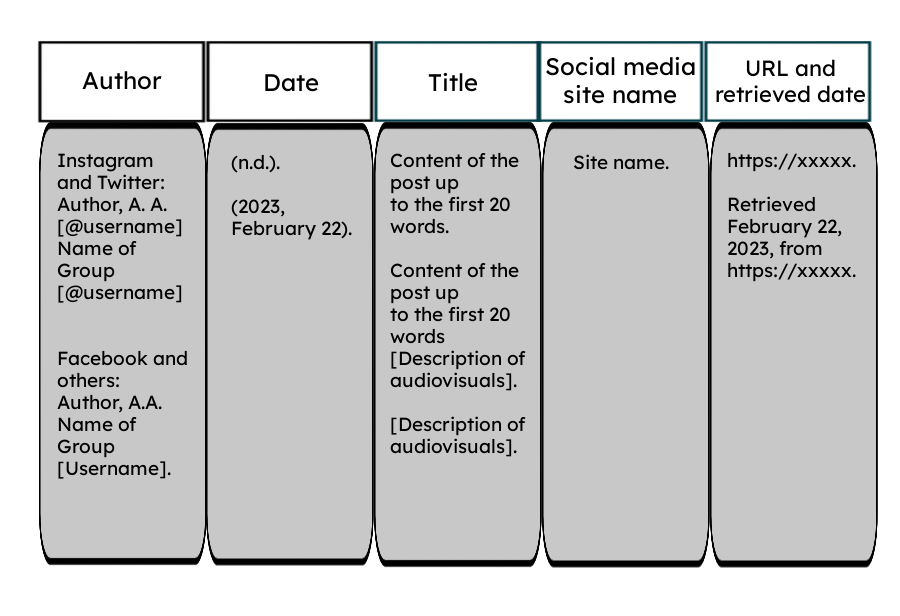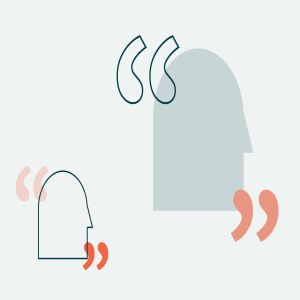These days, instruction and understanding around proper citation in a world of permeating social media can feel overwhelming. Research papers and final projects that once only included journals or encyclopedias now feature a variety of sources, including TikTok videos, tweets, and the like.
But like any other intellectual property utilized in our sphere, it is essential that we learn how to analyze, attribute, and paraphrase sources of information effectively. And because social media channels are around to stay, taking a proactive approach means instructors can stave off misconduct by establishing standards from the get-go, so that students can feel confident to include elements of high-quality content from these channels appropriately.
So, where to begin?First and foremost, educators need to include expectations around social media usage in their syllabi, rubrics, and honor code policies. This sets students up for success, so they know how and when they are permitted to incorporate content from social media in projects and papers. Educators who underscore the importance of giving credit to original authors and sources, thereby establish a culture of academic integrity and set expectations around high-quality, original work.
Additionally, instructors should remind students to verify the usefulness of a particular social media resource. Not all social media augments academic writing, so a syllabus may say: “Does this social media resource add meaningful value to your research paper/project? Are there other sources that could/should be considered?” Sometimes, a video or post on social media is actually better sourced from elsewhere online, so encouraging students to re-confirm usage is beneficial. Analyzing the validity and reliability of a source of information for an intended purpose is a crucial skill for student writing; Turnitin’s Source Credibility Pack offers instructors resources on this very competency.
Next, instruction around proper citation should take place early and often. Just like any learned skill, practice makes progress. When students have the chance to see how social media is cited and can give it a try in a classroom setting, they’ll more likely (and successfully!) do so independently in their own writing.
It can be helpful to create a structural approach to social citations, so any social media piece can be broken down easily and fall into specific categories. Purdue University (USA)’s popular writing resource Online Writing Lab (OWL) offers clear instruction on citation styles, including APA, MLA, and Chicago guidelines, which can generally be followed for even the most obscure social media.
One option is to translate each requirement from a literary source to a social source and craft a matrix for student reference. Check out this APA format for social media:

|
|
|
|---|---|
|
In-text citation:
|
According to a National Geographic Tweet (@NatGeo), a 30-foot-long phantom jellyfish has been spotted near Antarctica.
|
|
Works cited:
|
@NatGeo. 2023, February 10. “Extremely rare phantom jellyfish caught on camera”. Twitter. (https://twitter.com/NatGeo/status/1624128822747492352).
|
Because social media posts often lack particular required elements to cite, certain references may need to feature alternative information. Jennifer Rappaport, former managing editor of MLA style resources at the Modern Language Association, offers options:
“If the post does not have a title or any other text, as might be the case for a post containing only an image, provide a description…You can also use the text as the title in your entry and refer to the photo in your prose.”
Citing TikTok is slightly different because the content is video-based vs content-based. Thus, descriptions and the link itself are highly important because in a reference list where the video itself may not be easily viewed, the value of the content can be inferred. Often, using text or a description from the post in the “Title of Source” element is the best way to identify the work.
An MLA citation for a TikTok may look like this:
|
TikTok Video
|
|
|---|---|
|
In-text citation:
|
According to a video featuring Kristen Dicerbo, PHD and Chief Learning Officer at Khan Academy, the key to remembering what you study is to link it to something you already know (TikTok, @khanacademy).
|
|
Works Cited:
|
Dicerbo, Kristen [@khanacademy]. “If you spend hours studying but STILL can’t recall what you learned, these tips from our Chief Learning Scientist are for you!” TikTok, 2022, (https://www.tiktok.com/@khanacademy/video/7136228795631177006).
|
|
TikTok Profile
|
|
|---|---|
|
In-text citation:
|
Words that are very similar in English are often confusing for English Language Learners and native speakers alike. Ms. James (@iamthatenglishteacher) posted a video on TikTok that explains the difference between “affect” and “effect”, illustrating how “affect” is an action and “effect” is a noun with an article.
|
|
Works cited:
|
Ms. James. “Videos.” TikTok, 2022, https://www.tiktok.com/@iamthatenglishteacher.
|
Additionally, alongside teaching the structure and value of citations, the skill of paraphrasing is necessary to complete proper citation. Paraphrasing is a valuable skill that encourages students to read and consider information from a variety of sources, then showcase their understanding by sharing what they learned in their own words. Appropriate paraphrasing upholds academic integrity by citing the original author and can be taught utilizing Turnitin’ s Paraphrasing Pack, which offers ready-to-use lessons for the classroom.
Our world is more connected than ever. Knowledge is now shared fluidly and consistently in a variety of ways on myriad platforms. With an educated approach and a discerning eye, students can learn how to substantiate valuable information on social media and cite it appropriately for use and learning in the classroom.





